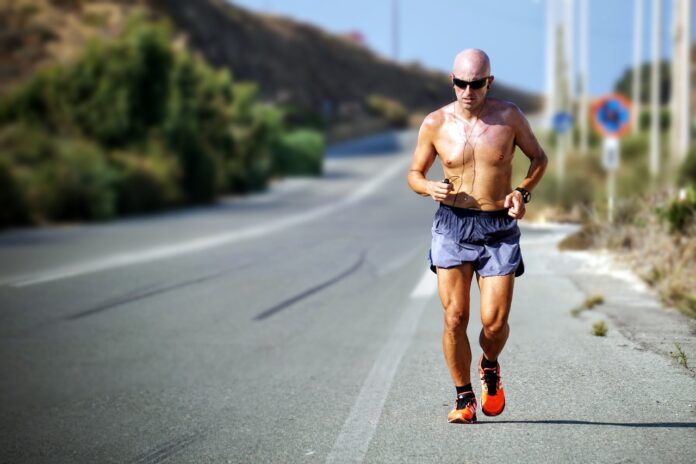Barbara Kutch, PT
Running offers a wide range of health benefits, from helping to protect against heart disease to boosting your mental health.
However, for all its benefits, running isn’t without risk. Injuries are common, and if left untreated, can leave you stuck at the starting line.
Fortunately, physical therapy can help runners regain their stride.
Penn Medicine Princeton Medical Center (PMC) Princeton Rehabilitation offers sports specific rehabilitation programs, including for running, to treat and prevent injuries and improve performance.
Proper Alignment Plays Crucial Role
Although running might appear simple—just lace up your sneakers and hit the road—it requires precise coordination of muscles and joints. Proper alignment plays a crucial role in preventing injuries and optimizing performance.
And typically, it all begins with your glutes.
Your gluteal muscles, located in the hips, are the powerhouse behind every stride. They stabilize your pelvis and propel your legs forward.
However, prolonged sitting and other lifestyle factors can weaken these muscles, leading to misalignment of your pelvis, which can cause hip and knee problems.
One of the most common conditions affecting runners is iliotibial band syndrome.
This condition occurs when the iliotibial band — a thick tendon running from your pelvis to just below your knee — becomes tight or inflamed. It often leads to discomfort on the side or front of the knee, making running painful.
Additionally, improper positioning of the feet when running can contribute to hip and knee problems.
For runners over age 40, the most common sites of injury, according to the American Physical Therapy Association, are the Achilles tendon and calf muscles.
These are soft tissues that are more vulnerable to injury with advancing age. Injuries to the Achilles tendon and calves are usually caused by overpronation a condition in which the arches of the feet turn inward and downward when walking and running.
More than 25% of runners experience running-related injuries at any given time, according to the American Academy of Orthopaedic Surgeons.
Don’t Ignore Warning Signs
Muscle soreness after a run is normal, especially when you’re starting out or increasing your distance. However, persistent or sharp pain is not. Ignoring these warning signs can turn a minor issue into a serious injury.
The American Physical Therapy Association recommends seeking help from a physical therapist if you experience:
- Pain that lingers after your run.
- Pain that scores higher than 3 out of 10 on a pain scale.
- Sharp or shooting pain during activity.
- Pain that wakes you up at night.
- Persistent discomfort that worsens over time.
- Recurring pain in the same area with every run.
Specialized Program
Princeton Rehabilitation offers runners a specialized program designed to address the biomechanics of running.
Runners undergo a thorough evaluation, including assessments of posture, range of motion, strength, and flexibility. In many cases, physical therapists use computer software to analyze a patient’s running gait as they are running on a treadmill.
Treatment plans are tailored to the individual and may include hands-on techniques like joint or soft tissue mobilization, targeted exercises, and education. Patients also receive a comprehensive home exercise program to continue progress between sessions.
Six Steps to Prevent Injury
While injuries are a common challenge for runners, they aren’t inevitable.
Here are six steps from the American Academy of Orthopaedic Surgeons and the American Physical Therapy Association to help prevent injury:
- Choose the right surface. Whenever possible, run on smooth, even terrain to minimize joint stress. Running on hills can increase strain on your ankles and feet, so limit this type of terrain. If running on a track, alternate directions halfway through your workout to distribute pressure evenly.
- Warm up and cool down. Start every run with a brisk walk or light drills for 5–10 minutes to activate your muscles. After your run, focus on stretching key muscle groups to improve flexibility and prevent tightness.
- Strengthen your core and hips. Exercises like lateral leg lifts, squats, deadlifts, bridges, and one-leg balances help build strength and stability in the muscles most used during running. Stronger hips and core muscles can reduce your risk of injury.
- Focus on proper form. Proper running form is essential for efficiency and injury prevention. Pay attention to how your feet strike the ground and where they land relative to your body. Aim for soft, even landings close to your body, and ensure your knees stay aligned throughout the stride.
- Wear the right shoes. Invest in sneakers with good shock absorption and support for your foot type. Keep in mind that running shoes lose about 60% of their shock absorption after 250–500 miles. If you’re running 10 miles a week, replace your shoes every 9–12 months. Avoid overly cushioned shoes, as they can alter your perception of the ground and lead to harder foot strikes.
- Stop if you’re in pain. Running through pain increases the risk of serious injury. If you experience persistent discomfort, consult a physical therapist to identify and address the problem.
Running offers many rewards, but injury can hold you back. Physical therapy can help you recover so you can stay in the race for years to come.
To find a physical therapist with Penn Medicine Princeton Health, call (609) 853-7840 or visit www.princetonhcs.org.
Barbara Kutch, PT, is physical therapist and certified strength and conditioning specialist with Penn Medicine Princeton Medical Center Princeton Rehabilitation. She is also certified by the Titleist Performance Institute.


